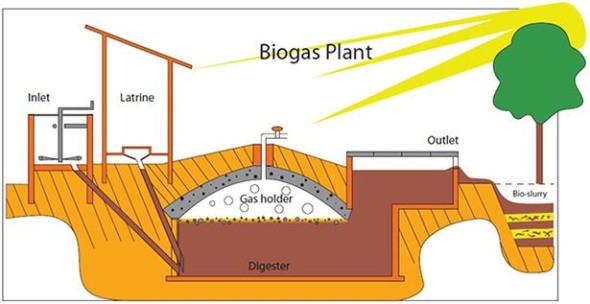Spinning Money from Methane
Posted on May 2, 2017 by Janice Thompson
Tags, Energy, Water/Wastewater

CUB supports a Bureau of Environmental Services (BES) biogas project, approved by Portland City Council in April, which has air quality, climate change, and economic benefits. This is a BES project because it uses methane produced by the biodigesters, a common feature of sewage plants, at Portland’s Columbia Boulevard treatment plant.
Treating methane to produce renewable natural gas (RNG) offers a climate change benefit by way of significant reductions in greenhouse gas emissions.
RNG is also economically beneficial because it can be shipped and used with conventional natural gas. Due to environmental incentives, however, RNG is more valuable, which means that the BES project will generate revenue on a very reasonable payback schedule.
Finally, compressing RNG enables it to be used as a transportation fuel. This has air quality benefits, especially when displacing diesel. The Columbia Boulevard industrial area is particularly fertile ground for proving this benefit.
BES was already using much of its methane, selling some to an adjoining industrial customer and using some to produce electricity for use at the treatment plant. But 23 percent of the methane was still being flared. The current biogas project ensures that BES effectively uses all of the methane to the benefit of their customers.
CUB has analyzed this project and related efforts for over two years. We always supported the “triple benefit” approach, emphasizing the need for economic value. We understood that in order for BES to make money, they had to spend money. But to win CUB’s support, the plan would have to incorporate an acceptable level of risk and payback schedule. CUB asked many questions and urged more careful due diligence from BES staff, and we thank them for their responsiveness.
Two key findings led CUB to our current position of support for the biogas project.
The first finding pertains to the price of RNG. All indications were that the RNG would be quite valuable. Positive responses from interested buyers affirmed this point.
The second finding pertains to the feasibility of a parallel project to ensure enough feedstock for the biogas treatment unit. The background here is that an initial feasibility assessment in mid-2015 indicated that the cost-effective size of the biogas unit was larger than originally anticipated. There are two options for additional feedstock to make effective use of the biogas unit, each with different risks and challenges. CUB needed a clear signal of the cost effectiveness of one, if not both, of these feedstock options to solidify our support for the biogas project. An economic analysis completed in January sent the clear feasibility signal that we needed.
CUB will continue to monitor both the biogas effort and its parallel feedstock project, but our recent voicing of support at the City Council is based on our analysis of the value of the RNG and the feasibility of feedstock options. Monetary and environmental benefits will not occur instantaneously, but CUB endorses the payback schedule and risk assessment so it is time to get this project designed and built.
To keep up with CUB, like us on Facebook and follow us on Twitter!




05/02/17 | 0 Comments | Spinning Money from Methane